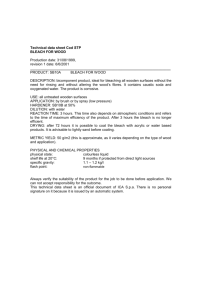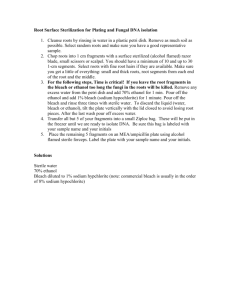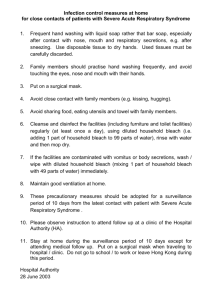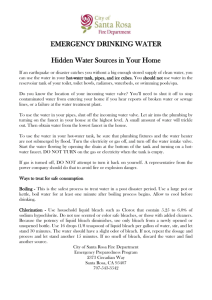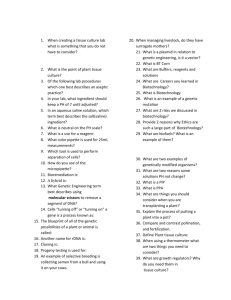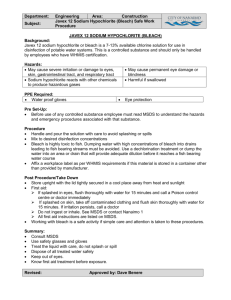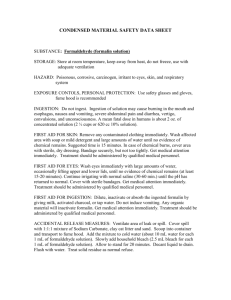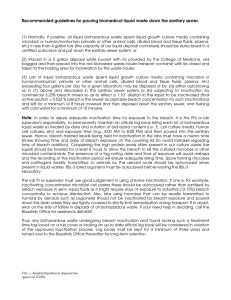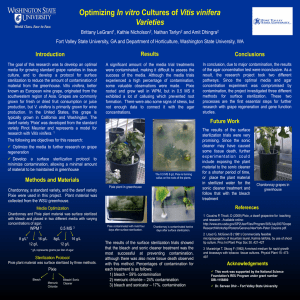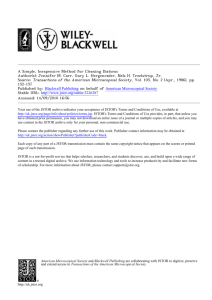ASEPTIC TECHNIQUE
advertisement
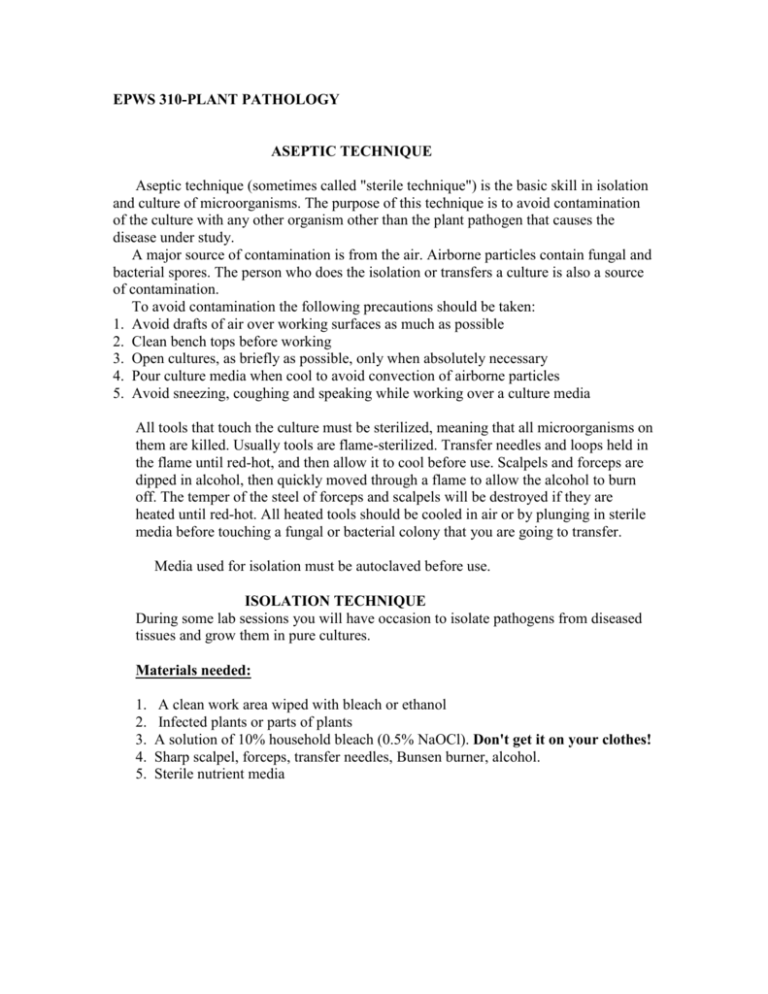
EPWS 310-PLANT PATHOLOGY ASEPTIC TECHNIQUE Aseptic technique (sometimes called "sterile technique") is the basic skill in isolation and culture of microorganisms. The purpose of this technique is to avoid contamination of the culture with any other organism other than the plant pathogen that causes the disease under study. A major source of contamination is from the air. Airborne particles contain fungal and bacterial spores. The person who does the isolation or transfers a culture is also a source of contamination. To avoid contamination the following precautions should be taken: 1. Avoid drafts of air over working surfaces as much as possible 2. Clean bench tops before working 3. Open cultures, as briefly as possible, only when absolutely necessary 4. Pour culture media when cool to avoid convection of airborne particles 5. Avoid sneezing, coughing and speaking while working over a culture media All tools that touch the culture must be sterilized, meaning that all microorganisms on them are killed. Usually tools are flame-sterilized. Transfer needles and loops held in the flame until red-hot, and then allow it to cool before use. Scalpels and forceps are dipped in alcohol, then quickly moved through a flame to allow the alcohol to burn off. The temper of the steel of forceps and scalpels will be destroyed if they are heated until red-hot. All heated tools should be cooled in air or by plunging in sterile media before touching a fungal or bacterial colony that you are going to transfer. Media used for isolation must be autoclaved before use. ISOLATION TECHNIQUE During some lab sessions you will have occasion to isolate pathogens from diseased tissues and grow them in pure cultures. Materials needed: 1. 2. 3. 4. 5. A clean work area wiped with bleach or ethanol Infected plants or parts of plants A solution of 10% household bleach (0.5% NaOCl). Don't get it on your clothes! Sharp scalpel, forceps, transfer needles, Bunsen burner, alcohol. Sterile nutrient media TISSUE PLATING 1. Examine diseased plant material carefully and note the size and shape of lesions. The lesions may be small (spots) or large. Cut off and discard parts of the plant that will not be used for isolation. Extremely dirty roots should be rinsed with running water. 2. Clean the bench area well. Place the tissue pieces on a clean paper towel. Use flame-sterilized tools at all times for cutting and handling the tissue. 3. Small spots: cut out the entire spot, leaving a margin of healthy tissue around it. Larger lesions: cut pieces from the edge of the lesion, so that you have a piece of healthy tissue and a piece of diseased tissue (see figure). 4. The first objective is to free the tissue from surface contaminants that are ubiquitous. Immersing all or part of the infected stem or leaf in the bleach solution does this. Make sure that no air bubbles are trapped on the plant tissue; these bubbles can protect microorganisms from exposure to the chemical. The length of time to immerse the tissue depends on the rate of penetration of the bleach: woody stems sections can be immersed for 5 minutes or more, delicate roots or leaves should be immersed only for 30 seconds to 1 minute. For fleshy tissues such as fruits, cleanse the outer surface by wiping with 10% bleach, then peel back the top layer of tissue and cut out pieces of lesion from within. 5. Tissues are now surface-sterilized and should be handled only with sterile instruments. The objective is to keep them free from contaminants. Since bleach is rapidly dissipated, it is not necessary to rinse thick tissues after the bleach treatment. Delicate tissues should be rinsed in sterile distilled water. 6. Remove the tissue pieces and blot them on a paper towel. Then put several pieces on a plate with media. Based on Laboratory Exercises in Plant Pathology. American Phytopathological Press
